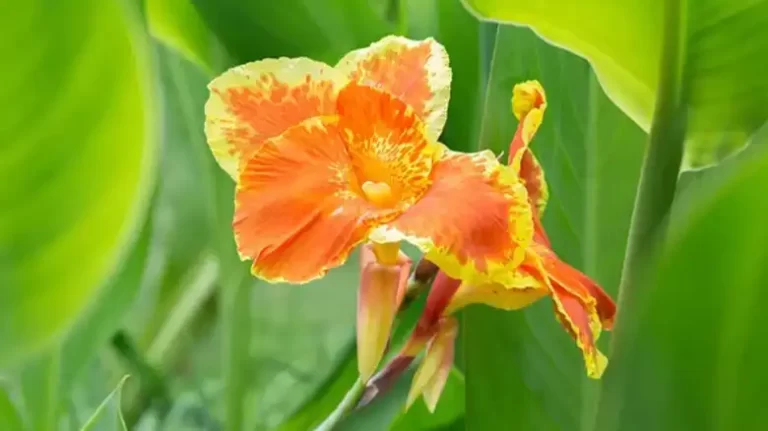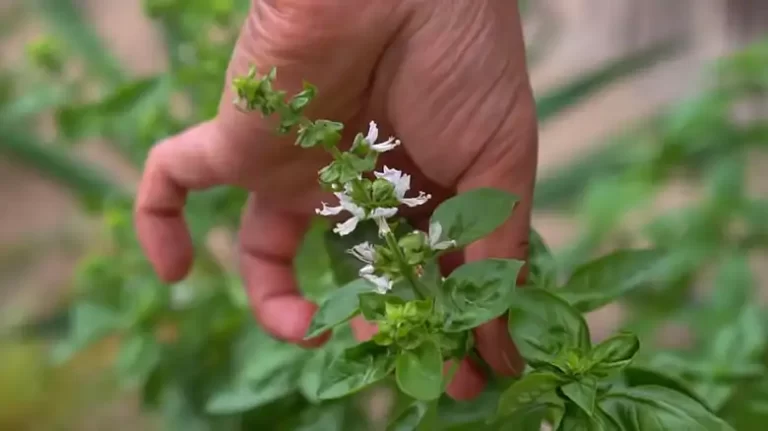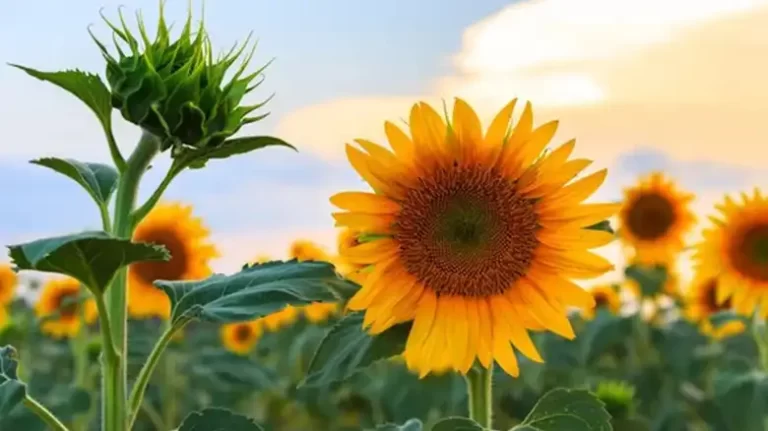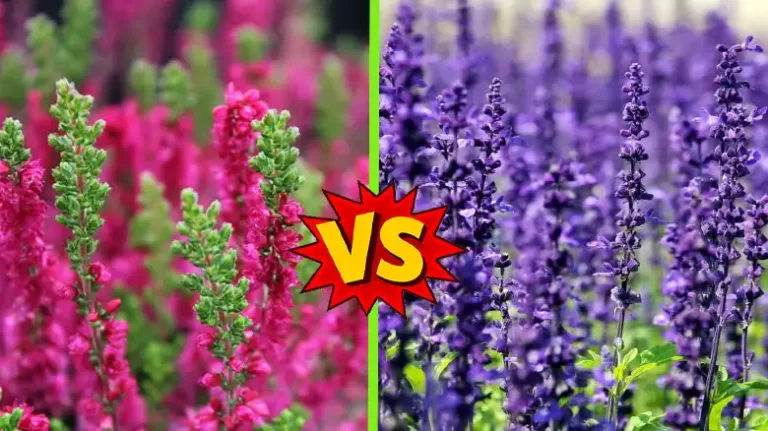Tulip vs Daffodil – Which Flower Is for You
When it comes to springtime blooms, two flowers stand out as perennial favorites: the tulip and the daffodil. These vibrant blossoms usher in the season with their kaleidoscope of colors and delicate fragrances. But which one is the right choice for your garden or floral arrangements?
In this in-depth comparison, we’ll explore the intricate differences between tulips and daffodils, helping you make an informed decision about which flower suits your preferences and needs.

Historical Significance Between Them
In the world of flowers, tulips and daffodils have carved out unique places in history. Explore the captivating stories and cultural significance that surround these two iconic spring blooms:
Tulips: A Tapestry of Time
Delve into the fascinating history of tulips, from their origins in the Ottoman Empire to the infamous “Tulip Mania” that swept through 17th-century Holland. Discover how these enchanting flowers became symbols of wealth, prosperity, and artistic inspiration.
Daffodils: Symbols of Hope and Renewal
Uncover the modest yet profound historical significance of daffodils. Learn about their appearances in mythologies and their roles as harbingers of spring, symbolizing hope, rebirth, and the promise of brighter days ahead.
Their Botanical Characteristics
In the botanical realm, tulips and daffodils each possess a unique set of characteristics that sets them apart. Delve into the intricate details of these springtime favorites to better understand their biology and what makes them stand out:
Tulips: The Genus Tulipa
Explore the fascinating world of tulips with a closer look at their botanical classification. Uncover the distinguishing features of this genus and discover the diversity of tulip species and varieties.
Petal Perfection
Understand the intricate structure of tulip petals and the variations that make each tulip variety unique. From elegant single blooms to flamboyant parrot tulips, there’s a tulip for every taste.
Leaves and Stems
Take a leaf out of the tulip’s book (quite literally) and learn about the lance-shaped leaves and sturdy stems that provide the framework for these vibrant flowers.
Daffodils: The Genus Narcissus
Delve into the world of daffodils, exploring their botanical classification within the Narcissus genus. Discover what sets daffodils apart from other spring blooms and why they’re a symbol of hope.
Trumpets and Tepals
Uncover the unique structure of daffodil flowers, with their trumpet-shaped central corona and surrounding petal-like tepals. Learn how these features contribute to their distinctive appearance.
Graceful Foliage
Explore the elegant, elongated leaves that grace the base of daffodil stems. These leaves not only add to the plant’s beauty but also serve practical purposes in its growth cycle.
Varieties and Hybrids
Peel back the layers of diversity within tulips and daffodils by discovering the multitude of varieties and hybrids that exist within these two genera. From classic cultivars to modern creations, there’s a world of choice awaiting you.
Tulip Varieties
Delve into the captivating array of tulip varieties, from traditional favorites to the latest hybrids. Learn about their unique colors, shapes, and sizes that make them a favorite canvas for garden design.
Daffodil Hybrids
Explore the world of daffodil hybrids and the innovative breeding techniques that have led to new and exciting daffodil varieties. From miniature marvels to large-cupped classics, find out what makes these hybrids special.
Their Colors and Appearance
In the enchanting world of flowers, both tulips and daffodils offer a visual feast that’s nothing short of spectacular. Explore the captivating spectrum of colors and distinctive appearances that these two floral wonders bring to gardens and floral arrangements.
From the vivid hues of tulips to the sunny radiance of daffodils, this section delves into their unique aesthetics, helping you appreciate the beauty that graces your surroundings each spring.
Tulips: A Chromatic Symphony
Discover the dazzling array of colors that tulips flaunt, from fiery reds to serene blues, and every shade in between. Explore the intricate patterns and variegated petals that make each tulip variety a work of art. Learn about the graceful curves and geometric precision that define the form of tulip blossoms. Uncover the exotic allure of parrot tulips with their fringed and feather-like petals.
Daffodils: The Sunshine Flowers
Delve into the world of daffodil yellows and understand why they symbolize the warmth and optimism of spring. Explore the iconic trumpet-shaped central corona surrounded by graceful tepals that distinguish daffodils. Learn how the pure white elements of daffodils contribute to their timeless charm. Discover the unique beauty of double daffodils, with multiple layers of petals for a lush and voluminous appearance.
Contrasting Beauty
Compare and contrast the vibrant drama of tulip colors with the sunlit simplicity of daffodils. Examine how the textural intricacies of tulip petals differ from the smooth elegance of daffodil blooms. Explore creative ways to combine tulips and daffodils in your garden or floral arrangements to achieve a harmonious visual balance.
Their Blooming Season
The blooming season of tulips and daffodils is a pivotal moment in any garden enthusiast’s calendar. Each of these iconic spring flowers has its own unique timing, creating a dynamic tapestry of colors that signals the end of winter and the onset of warmer days.
In this section, we delve into the intricate details of when and how these floral gems burst into life, offering insights to help you plan your garden’s seasonal display.
Tulips: The Early Showstoppers
1. Early Spring Elegance
Tulips take center stage as early spring heralds its arrival. Depending on the variety, they begin blooming from late winter to early spring.
2. Embracing Diversity
The diverse range of tulip varieties means you can enjoy their beauty for an extended period, with some blooming in early spring and others extending into late spring.
3. A Gradual Unfolding
Tulip beds come alive gradually, creating a captivating spectacle as different varieties bloom at varying times. This staged display adds depth and intrigue to your garden.
Daffodils: Harbingers of Spring
1. Welcome the Sun
Daffodils share the spotlight with tulips in welcoming the arrival of spring. They typically start blooming in early to mid-spring, a bit later than tulips.
2. The Dance of Yellow and White
Daffodils burst forth in cheerful yellow hues, often with contrasting white accents. Their late arrival complements the early bloomers, ensuring a continuous flow of color.
3. Spring’s Optimism
Daffodils symbolize the optimism of spring, as they coincide with a broader spectrum of blooms. Their vibrant blossoms add a touch of exuberance to any landscape.
Extending the Season
1. Strategic Planting
By carefully selecting tulip and daffodil varieties with different bloom times, you can extend the spring blooming season in your garden.
2. Overlapping Beauty
Mixing early and late blooming cultivars of both flowers creates a seamless transition of color, ensuring your garden remains vibrant for an extended period.
3. Planning for Succession
Succession planting, where you plant new bulbs each year, can create a continuous display of tulips and daffodils that lasts throughout the spring season.
4. Container Gardening
For those with limited space, planting tulips and daffodils in containers allows you to move them around and optimize their blooming season.
Care and Maintenance For Them
Gardening enthusiasts, rejoice! In this section of our “Tulip vs. Daffodil” showdown, we delve into the nitty-gritty of caring for these beloved springtime blossoms.
Whether you’re a seasoned green thumb or just beginning your floral journey, you’ll find invaluable tips and tricks to ensure your tulips and daffodils thrive. From planting to pest management, we’ve got you covered with expert advice and insights.
Planting Tulips and Daffodils
Discover the ideal soil conditions that both tulips and daffodils crave for robust growth and stunning blooms.
Learn the art of proper bulb placement to ensure your flowers receive the right amount of sunlight and moisture.
Explore the nuanced watering needs of these flowers and find out how to strike the perfect balance for healthy growth.
Fertilizing Your Spring Beauties
Uncover the key nutrients that tulips and daffodils require and how to provide them through fertilization. Get insights into when and how often to fertilize your bulbs for maximum flowering potential.
Protecting Against Pests and Diseases
Identify the pests and diseases that may target your tulips and daffodils and the signs to watch for. Explore eco-friendly methods to keep unwanted visitors at bay and safeguard your blossoms.
Extending the Blooming Season
Learn how to plan your bulb planting to enjoy a prolonged display of tulips and daffodils. Discover the art of deadheading and other maintenance practices to encourage extended blooming.
Preparing for Winter and Beyond
Find out what to do with your tulips and daffodils after they’ve graced your garden with their beauty. Get guidance on preparing your bulbs for winter to ensure their return in the following spring.
Symbolism and Meaning For Them
Tulips are often associated with love and passion. Red tulips symbolize deep love, while white tulips represent purity and forgiveness. The variegated varieties convey elegance and grace. Giving tulips can be a gesture of perfect love, making them popular in romantic contexts.
Daffodils embody the spirit of renewal and the promise of a fresh start. They are often seen as symbols of hope and resilience. In some cultures, presenting daffodils is an expression of support during challenging times, signifying the hope for better days ahead.
Their Environmental Impact
While tulips are beloved for their beauty, their cultivation can have environmental implications. Pesticides and herbicides are sometimes used to protect them from pests and diseases. However, there are sustainable practices available to reduce their environmental footprint.
Daffodils are generally considered a more environmentally friendly option. They require fewer chemical interventions and can even deter pests from other plants due to their toxic alkaloids. Choosing daffodils can contribute to a greener and more sustainable garden.
Important Questions
1. Can I plant tulips and daffodils together in the same garden?
Yes, you can plant tulips and daffodils together in the same garden. They have similar growing requirements, including well-draining soil and full to partial sunlight. Plant tulips and daffodils at the same depth, with tulips on top to create a stunning spring display.
2. Are there any poisonous parts to these flowers?
Yes, daffodils contain toxic alkaloids in their bulbs, stems, leaves, and flowers. Ingesting any part of a daffodil can lead to symptoms such as nausea, vomiting, and diarrhea. Tulips, while generally less toxic, can also cause mild stomach upset if consumed. It’s essential to exercise caution, especially if you have pets or children.
3. How do I prevent bulb rot in tulips and daffodils?
To prevent bulb rot in both tulips and daffodils, ensure that you plant them in well-draining soil. Avoid overwatering, as excessive moisture can lead to fungal issues.
Plant bulbs at the recommended depth, which is typically two to three times the bulb’s height. Proper spacing between bulbs can also help improve air circulation and reduce the risk of rot.
4. Can I cut tulips and daffodils for indoor arrangements?
Yes, both tulips and daffodils make excellent cut flowers. To maximize their vase life, cut the stems at an angle and place them in lukewarm water. Remove any foliage that will be submerged in the water to prevent bacterial growth. Change the water every few days to keep the flowers fresh.
5. Which flower is better for naturalizing in my garden?
Daffodils are often preferred for naturalizing because they are more resilient and tend to multiply over time. They are less susceptible to pests and diseases, making them an excellent choice for long-term, low-maintenance garden displays. Tulips may require more attention and replanting to maintain their presence in the garden.
Final Thoughts
In the eternal debate of tulip vs. daffodil, the choice ultimately boils down to your preferences and gardening goals. Tulips offer an extensive color palette and a sense of elegance, while daffodils bring forth the warmth of spring with their radiant yellows.
Both flowers have their unique charm and symbolism, making them valuable additions to any garden. Consider your climate, maintenance preferences, and the message you wish to convey when choosing between these two springtime treasures.





![Dolphin Flower Plant [Total Care Guide]](https://www.daisynatives.com/wp-content/uploads/2023/12/Dolphin-Flower-Plant-768x431.webp)